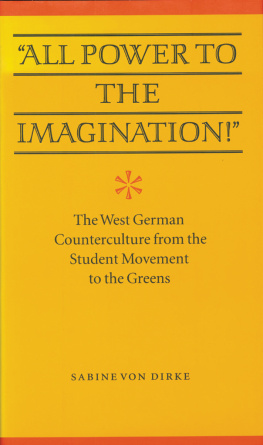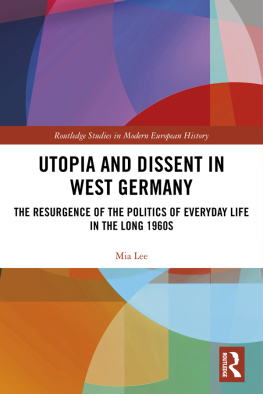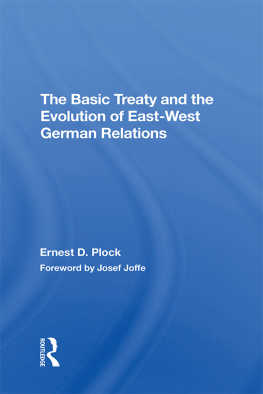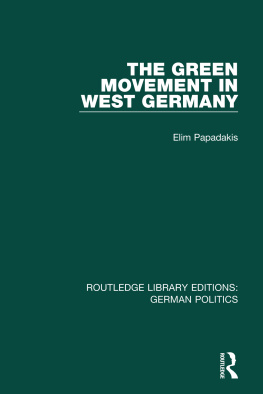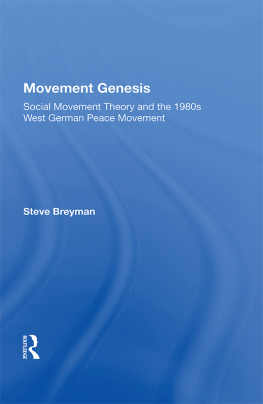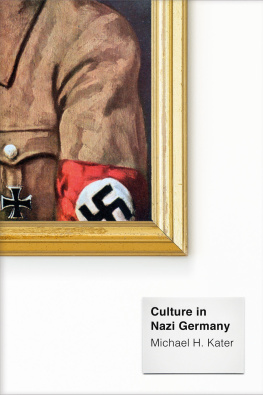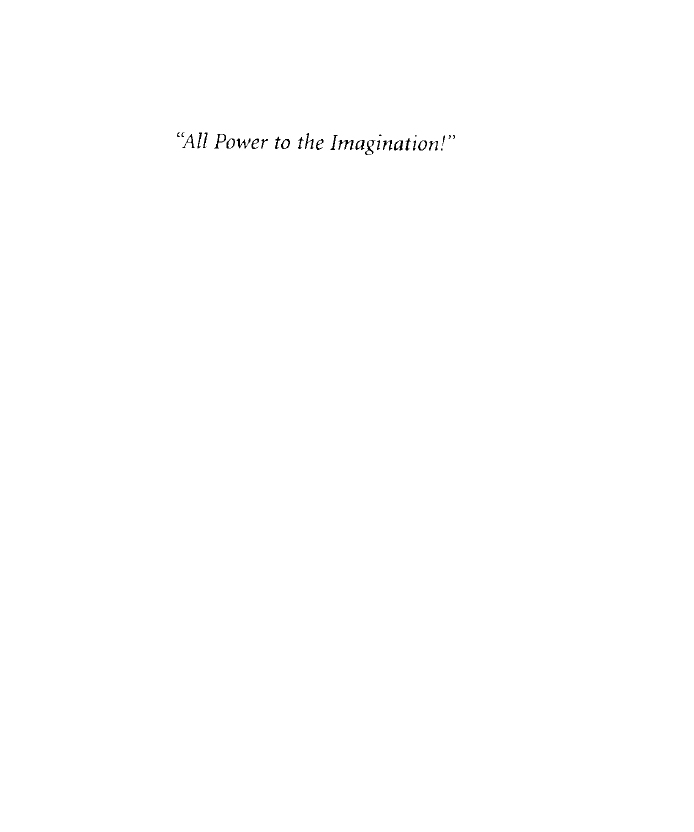
All Power to the Imagination!
Modern German Culture and Literature General Editor: Peter Hohendahl, Cornell University Editorial Board: Russell Berman, Stanford University; Jane Caplan, Bryn Mawr College; Ute Frevert, Freie Universitt, Berlin; Martin Jay, University of California, Berkeley; Sara Lennox, University of Massachusetts, Amherst; Klaus Peter, University of Massachusetts, Amherst; Klaus R. Scherpe, Freie Universitt, Berlin

1997 by the University of
Nebraska Press. All rights reserved
The paper in
this book meets the minimum
requirements of American National
Standard for Information
SciencesPermanence of Paper for
Printed Library Materials,
ANSI Z39.48-1984. Typeset in Adobe
Minion and Fontek Isis.
Book designed by R. Eckersley
Library of Congress
Cataloging-in-Publication Data
Von Dirke, Sabine, 1960
All power to the imagination! :
the West German counterculture
from the student movement
to the Greens / Sabine von Dirke.
p. cm. (Modern German
literature and culture). Includes
bibliographical references
and index. ISBN 0-8032-4663-3
(cl: alk paper) ISBN 978-0-8032-9985-6
(epub) ISBN 978-0-8032-9986-3
(mobi) 1. Subculture
Germany. 2. Social movements
Germany History 20th
century. 3. Youth movement
Germany History
20th century. I . Title. II . Series.
HQ799-G5V66 1997
306.10943dc20 96-19044
CIP
The publisher does not have any control over and does not assume any responsibility for author or third-party websites or their content .
ACKNOWLEDGMENTS

I would like to take this opportunity to express my gratitude to a few of those who have helped to shape this project. I want to thank Russell Berman, who has taught me about the Frankfurt School and encouraged me to work in the field of cultural studies. I am also highly indebted to David Wellbery and Sabine Wilke for my intellectual development. I am very grateful to my friend and colleague Michelle Mattson for the many stimulating discussions we had about my work. On the more material side of life, I owe much to my mother, whose generosity allowed me to conduct research in Germany for extended periods of time. Above all, I am deeply indebted to my husband for his manifold support, encouragement, and untiring confidence in me and my project.
INTRODUCTION : Culture and Hegemony
P ostwar West Germany is often described as a stable democracy characterized by a homogenous rather than conflictual political culture. Closer inspection of the political, social, and cultural developments challenges this perception and reveals numerous instances of political discontent and protest early on in the history of the Federal Republic. The immediate postwar period and the 1950s, for example, saw their share of political protest crystallizing around armament issues. These early peace movements and other subcultural expressions of dissent were, however, successfully contained by the dominant culture. A decade later, the student movement was the first sociopolitical and cultural upheaval that thoroughly disrupted the harmony of the Adenauer era and had lasting impact on the further development of West German society. The advent of the student movement marks the beginning of the West German counterculture, which has grown over the years into a significant political force, as the success of the ecology movement and of the first alternative daily newspaper, die tageszeitung , attests. We cannot understand todays Germany without knowing the historical and conceptual developments of this counterculture. This study therefore examines the sub- and countercultural history of West Germany from the 1950s through the mid-1980s.
The counterculture received much attention right from the beginning, particularly from social scientists, who coined the term new social movements as a summarizing identifier for a variety of oppositional movements such as the citizens initiatives, the womens movement, the ecology movement, the peace movement, the squatters movement, and the alternative movement. Since each of these practiced an alternative politics as well as lifestyle, the term alternative movement is often used as a synonym for the new social movements as a whole, stressing the commonalities of the variety of oppositional and countercultural groups. Some studies blur the Instead, it analyzes the correlation between the countercultures alternative politics and its aesthetic concepts and artistic practices.
As the term counterculture already indicates, its politics, artistic practices, and aesthetic concepts emerged in opposition to those of mainstream society. At first, then, we need to clarify the key terms culture, counterculture, subculture , and finally hegemony that represent the conceptual framework for our analysis. Especially the two terms counterculture and subculture are often employed indiscriminately, and even the notion of culture suffers from conceptual imprecision. The latter is often used as if there were a consensus as to its definition, where in fact culture means different things for different people and social groups.
According to Raymond Williams, two noncongruent definitions of culture have become most common. The term culture is frequently employed in a narrow manner to refer only to the manifestations of the cultivation of the mind, as in arts and human intellectual work.manifestation for instance, works of art and as institutions and processes, while emphasizing the latter. Second, it views society not as a homogenous entity but as a collection of various social groups, which develop distinct cultures and struggle with each other for dominance, or in other words, for cultural hegemony.
The concept of hegemony stems from Antonio Gramscis Prison Notebooks , which he wrote during his incarceration under the Fascist regime in Italy from 1929 to 1935. Gramscis concept found widespread interest among Western Marxists after World War II, since it theorizes why the working class has failed as the historical revolutionary subject in Western industrialized societies and has instead become more and more integrated into the existing economic and social order. The notion of integration lies at the center of the Gramscian idea of hegemony. In contrast to coercive domination, hegemony represents rule through consent. The ruling class or configuration of ruling social groups succeeds in establishing a framework of ideas, beliefs, and values, which it disseminates through the various institutions of civil society, such as the educational system, the church, and the media. Thus the ruling elites mold the majoritys worldviews, interests, and desires according to their own. The ruling classes appear more as leaders than as oppressors because they have convinced the majority to follow them. For Gramsci, hegemony was characteristic of postfeudal, particularly bourgeois societies and was the latters secret of success.
The scholars at the Birmingham Center for Contemporary Cultural Studies adopted Gramscis theory of hegemony and applied it to postwar Great Britain. Comparing the prewar to the postwar period, they argue that the 1950s represent a period of true hegemonic domination. experienced a period of class consent and social harmony under the auspices of the economic miracle, the period of exuberant economic growth from the 1950s to the late 1960s.
Next page
